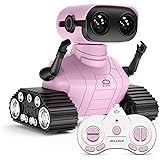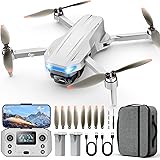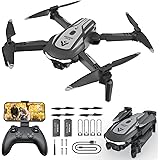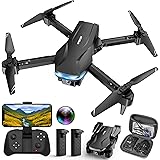Ever wondered if you could hold a fully functional drone in the palm of your hand, control it with just your smartphone, and even build it yourself? The answer, as the video above brilliantly demonstrates, is a resounding yes with the innovative ESP-FLY. This isn’t just another DIY project; it’s an invitation to delve into the fascinating world of micro-robotics and embedded systems, culminating in a compact yet powerful ESP32 drone that redefines portable flight.
The ESP-FLY, a marvel of miniaturization, leverages the robust capabilities of the ESP32 platform to deliver an unparalleled building and flying experience. Its small form factor belies its sophisticated design, encompassing custom PCBs, precise 3D-printed components, and an open-source firmware that empowers builders to customize and optimize their quadcopter. For makers, hobbyists, and drone enthusiasts, the journey from components to aerial acrobatics offers a deep dive into engineering principles, rapid prototyping techniques, and the exciting potential of microcontrollers in flight applications.
The Engineering Behind the ESP Fly: Crafting a Micro-Quadcopter
Building a drone as small and capable as the ESP-FLY involves meticulous design and component selection. The vision for this micro-quadcopter prioritizes both agility and accessibility, making high-performance flight achievable without the prohibitive costs or steep learning curves often associated with commercial drones. Every design choice, from the frame material to the placement of surface-mounted components, contributes to a delicate balance of weight, strength, and aerodynamic efficiency.
1. Precision in Design: From Components to CAD
The foundation of any successful drone build lies in its structural integrity and thoughtful layout. For the ESP-FLY, the journey begins with exact measurements of each component. Imagine trying to fit a complex puzzle into an impossibly small box; every millimeter counts. This initial phase dictates the overall dimensions, leading to a compact 50 mm drone frame. Utilizing advanced CAD software like Autodesk Fusion, designers can virtualize the entire build, iterating on concepts such as the closed-body aesthetic and the two-prong motor arms. This iterative process is crucial for optimizing airflow, protecting delicate electronics, and ensuring the stability needed for sustained flight.
Beyond functionality, the frame’s design also integrates stylistic elements. A top cover with its name and even an optional cover to support a tiny 3-gram FPV camera not only adds personality but also enhances the drone’s versatility. These STL files, readily available on platforms like Cults 3D, allow builders to tap into a community-driven design ecosystem, ensuring that intricate details and optimal print settings are accessible. The advantage of such a detailed design is evident in the final 4-gram 3D printed frame, which provides both accuracy and a lightweight solution essential for a micro-drone. This level of precision is often what sets high-performing ESP32 drones apart, enabling responsive controls and extended flight times.
2. The Frame: 3D Printing vs. DIY PVC
While 3D printing offers unparalleled precision and detail, accessibility remains a key consideration for many DIY projects. The ESP-FLY project thoughtfully provides alternatives, recognizing that not every builder has immediate access to a high-speed 3D printer like the Elegoo Neptune 4 Plus, which can produce the drone’s parts in just 30 minutes, significantly faster than older models. The flexibility of a magnetic build plate and the absence of common printing issues like stringing or warping are definite advantages for rapid prototyping.
However, for those facing budget constraints or simply preferring a hands-on crafting approach, the PVC version of the drone frame stands as a testament to ingenuity. By transforming a simple 2-inch hardware store PVC pipe into a flat sheet, builders can meticulously cut and bend parts based on a provided blueprint. This method, while adding 2 grams to the drone’s weight (resulting in a 6-gram frame), still results in a fully functional frame capable of flight. It’s a compelling example of how resourcefulness can overcome technical barriers, proving that a capable ESP32 drone can be built with minimal specialized equipment. The process, involving heat guns, hobby knives, and careful sanding to achieve a thickness of less than a millimeter for weight management, highlights a different skill set—one rooted in traditional model-making and precision crafting.
Advanced Electronics: At the Core of Your ESP32 Drone
The true intelligence and performance of the ESP-FLY micro-quadcopter stem from its meticulously designed electronics. Unlike larger drones that might accommodate off-the-shelf flight controllers, the minuscule dimensions of the ESP-FLY necessitate a custom-built solution. This leads to the development of a compact PCB (Printed Circuit Board) that integrates critical components while maintaining the crucial lightweight profile. This intricate dance between functionality and form factor is where the project truly shines.
3. PCB Design with Flux: A Streamlined Workflow
Designing a custom circuit board for such a small ESP32 drone demands a powerful yet intuitive PCB design software. The video highlights Flux, a platform that incorporates AI assistance to streamline the often-complex process. Imagine a copilot guiding you through every step, from component placement to trace routing. This AI integration is a game-changer, allowing designers to quickly position surface-mounted components onto the canvas, saving hours of manual searching and ensuring an efficient workflow.
The schematic phase involves wiring up crucial elements, such as the motion sensor to the microcontroller and integrating a 4-channel motor driver circuit along with the drone’s essential head and tail lights. Once the schematic is finalized, the layout phase begins. A 4-layer PCB is employed here, a sophisticated choice for miniature electronics. The top layer might handle sensitive motion tracking, while the bottom layers manage motor control and power distribution. This multi-layer approach is vital for minimizing electromagnetic interference (EMI), which can significantly affect sensor accuracy and overall flight stability—especially crucial for a nimble micro-drone. The AI copilot’s tips on managing EMI around sensitive components underscore the importance of expert-level considerations in a project of this scale, ensuring stable performance where space is at a premium. After a thorough review, the design is exported as a Gerber file, the industry-standard format for PCB manufacturing.
4. JLCPCB: Bringing Custom Boards to Life
With the Gerber file ready, the next step is to translate the digital design into a physical board. JLCPCB is presented as an accessible, affordable, and reliable PCB manufacturer. Imagine transforming a complex digital blueprint into a tangible circuit board with just a few clicks. The process is remarkably straightforward: upload the Gerber file, configure board specifications such as setting layers to 4, choosing quantity, specifying a 1.2 mm thickness, and selecting a board color (green often being the fastest and most cost-effective). The ability to remove manufacturing marks further demonstrates the level of customization available, all at competitive prices, sometimes as low as $2 for high-quality 1- to 8-layer PCBs.
Beyond just manufacturing the bare boards, JLCPCB also offers a PCB assembly service. This is a significant advantage for those who may lack the specialized tools or expertise for soldering intricate surface-mounted device (SMD) components. Imagine receiving a ready-to-use board with all the tiny LEDs, MOSFETs, flyback diodes, resistors, and capacitors already precisely soldered on both sides. This service drastically lowers the barrier to entry for complex electronics projects like the ESP-FLY, allowing builders to jump directly into the assembly phase. The use of an SMD stencil, recommended for manual assembly, further illustrates the precision required to apply solder paste to the miniature pads, ensuring perfect alignment for the various components. This attention to detail results in a completed IMU/motor driver module weighing a mere 1 gram, a testament to the benefits of custom PCB integration for compact and lightweight designs.
Integrating the Intelligence: XIAO ESP32 S3 in the ESP Fly
Every drone needs a brain, and for the ESP-FLY, the Seeed Studio XIAO ESP32 S3 microcontroller serves as its sophisticated control center. Choosing the right microcontroller for a micro-drone is paramount, as it dictates the drone’s processing power, connectivity, and overall efficiency. The XIAO ESP32 S3 stands out as an exemplary choice, perfectly balancing a tiny footprint with robust capabilities.
5. Assembling the Micro-Drone: A Detailed Walkthrough
The XIAO ESP32 S3, measuring a mere 21 by 17 mm, is ideal for the ESP-FLY. Its dual-core processor packs enough punch to manage the complex flight firmware, while its built-in low-latency Wi-Fi ensures real-time control without the need for additional modules. This integrated approach simplifies the hardware design and reduces overall weight, a critical factor for a lightweight drone. Imagine the processing power of a larger board compressed into a thumb-sized unit, handling everything from sensor input to motor commands with ease. Furthermore, its integrated battery management system allows for direct battery power and convenient USB-C charging, coupled with a remarkably low 100 milliamp power draw, which helps extend precious flight time.
The assembly process, once the custom PCB and microcontroller are ready, involves several precise steps. After giving the drone some “personality” by coloring debossed areas, the structural and electrical integration begins. A small zip tie serves as an ingenious battery strap, securely holding the one-cell battery. The 6×15 mm coreless motors, with their 0.8 mm shaft diameter, are carefully installed into the frame arms. Builders must pay close attention to motor orientation and wire color to ensure the correct clockwise and counterclockwise pairings, which are fundamental for stable quadcopter flight. The wires are neatly tucked into the drone arms and then connected to their designated pads on the motor driver side of the PCB. This organized internal wiring not only looks clean but also prevents interference and snagging during flight.
The drone’s landing gear, a simple yet effective design, utilizes 1 mm solid core jumper wire sections, bent into V-shapes and secured into specific holes in the motor holder regions. This minimalist approach ensures durability without adding unnecessary bulk. The antenna, originally a Flex PCB, is modified by desoldering and stripping to expose an enameled section, then carefully bent and positioned to fit neatly under the top cover, ensuring optimal signal reception without obstruction. Finally, the Gemfan Tri-Bladed props are mounted. The correct orientation of these propellers is crucial; air must blow downward for lift. Using different colored props for the rear motors is a clever, practical tip for quick front-to-back identification during flight. For power, a battery ranging from 150 to 300 mAh with at least a 25C discharge rate is recommended, emphasizing the need for batteries that can supply sufficient current, often ruling out those with built-in battery management boards that limit output. These specific component choices and detailed assembly steps are what enable the ESP-FLY to transition from a collection of parts to a fully capable ESP32 drone.
Flashing Firmware and Mastering Control: Your ESP32 Drone Takes Flight
With the physical assembly complete, the next critical phase involves breathing digital life into the ESP-FLY: flashing the firmware and setting up its control mechanisms. This process delves into the realm of embedded software development, transforming the microcontroller into a responsive flight controller capable of executing complex aerial maneuvers. The open-source nature of the ESP-Drone project, inspired by the Bitcraze Crazyflie, offers a robust and customizable foundation.
6. The ESP-IDF Journey: From Code to Flight
The firmware flashing process for the ESP-FLY utilizes the ESP-IDF (Espressif IoT Development Framework), a powerful development environment specifically designed for ESP32 chips. This framework provides the necessary tools and libraries to compile and upload code to the microcontroller. Imagine a comprehensive workshop where all the tools for software development are neatly organized. The video guides users through downloading ESP-IDF version 5.0.7, a substantial 0.96 gigabyte installation, ensuring that PowerShell and ESP32 S3 related boards are selected during setup.
Once ESP-IDF PowerShell is configured, the firmware, ideally an adjusted version with correct hardware settings provided by the project, is prepared. The process involves navigating to the firmware directory within PowerShell and executing a command like IDF.py -P COM[X] flash monitor, where COM[X] corresponds to the drone’s specific COM port identified in the Device Manager. This command not only flashes the ESP-Drone firmware to the XIAO ESP32 S3 but also initiates a monitor to display output logs. Successful flashing is indicated by a “Ready to Fly” message, with critical elements like the motion sensor chip connection and the access point network details appearing in green. Minor warnings about unused sensors or drivers are typically normal and can be disregarded, as they do not impact the core functionality of this ESP32 drone. This step is pivotal; it’s where the hardware and software converge, enabling the drone to interpret commands and stabilize itself in flight.
7. Advanced Tuning and Calibration: Maximizing Performance
For builders seeking to fine-tune their ESP-FLY or adapt it to specific requirements, the ESP-IDF offers powerful configuration options. Typing IDF.py menu config in PowerShell opens a keyboard-operated configurator menu. This interface allows for detailed adjustments, such as selecting the exact ESP chip, enabling or disabling a buzzer, and crucially, defining pin assignments for communication lines, sensors, LEDs, and motors. Imagine a control panel where every aspect of your drone’s behavior can be precisely calibrated. While the default settings are optimized for the ESP-FLY, this capability empowers advanced users to experiment and customize, much like adjusting parameters in Betaflight for more conventional racing drones. Any changes made here, from motor mapping to sensor calibration, must be saved and then re-flashed to the drone to take effect, highlighting the iterative nature of embedded systems development.
Beyond the menu config, accessing even more advanced drone settings is possible through the Crazyflie client. By typing CF client in PowerShell, a graphical interface appears, allowing the computer to connect to the drone’s Wi-Fi access point (password: 12345678). This client provides real-time telemetry, including battery voltage, visual motion tracking data, and raw pitch, roll, and yaw values. It also offers an “advanced flight mode” where parameters like trim, rates, and thrust thresholds can be manipulated. Imagine a digital dashboard offering deep insights into your drone’s performance metrics and control characteristics. Adjusting these settings is vital for optimizing the drone’s stability and responsiveness, allowing pilots to tailor the flight characteristics of their ESP32 drone to their personal flying style.
8. Intuitive Control: Phone App and FPV Immersion
The ultimate goal for any ESP32 drone is seamless and intuitive control. The ESP-FLY achieves this through a dedicated smartphone application, making expensive transmitters obsolete. After powering up the drone and allowing it to perform its essential calibration on a level surface (indicated by a brief motor spin), users connect their phone to the drone’s Wi-Fi access point (password: 12345678). The ESP Drone app, available on the App Store for iOS or via an APK download for Android, then becomes the primary control interface. Imagine holding the power to control your micro-quadcopter directly in your hand, with a user-friendly joystick layout and customizable settings.
Within the app, critical flight control settings can be adjusted, including joystick modes, pitch and roll trim for stabilization, and an advanced mode for increasing angle and thrust values. Users can also switch between tilting their device for control or using traditional joysticks, and even adjust joystick sizes for comfort. While some app buttons might be non-functional (a point where community input for solutions is welcomed), the core controls are robust. The left joystick manages throttle and yaw (steering), while the right joystick handles pitch and roll (forward, backward, sideways movement). This intuitive setup makes the ESP-FLY accessible even for novice pilots. Once connected and calibrated, the ESP-FLY is airborne, ready to explore.
For FPV enthusiasts, the ESP-FLY doesn’t disappoint. An optional 3D-printed top cover accommodates a WT07 3-gram micro FPV camera, transforming the standard drone into an immersive first-person viewer. This involves carefully connecting the camera’s power input to the battery connector and pairing it with a 5.8 GHz FPV headset. Imagine experiencing the world from the perspective of your tiny drone, navigating tight spaces and performing aerial acrobatics with a live video feed. Despite adding a little weight and reducing flight time by about a minute, the FPV capability extends the drone’s utility, making it perfect for indoor exploration or even challenging outdoor flights within its impressive 100+ meter transmission range. This integration of FPV further solidifies the ESP-FLY’s position as a versatile and high-performance ESP32 drone platform.











